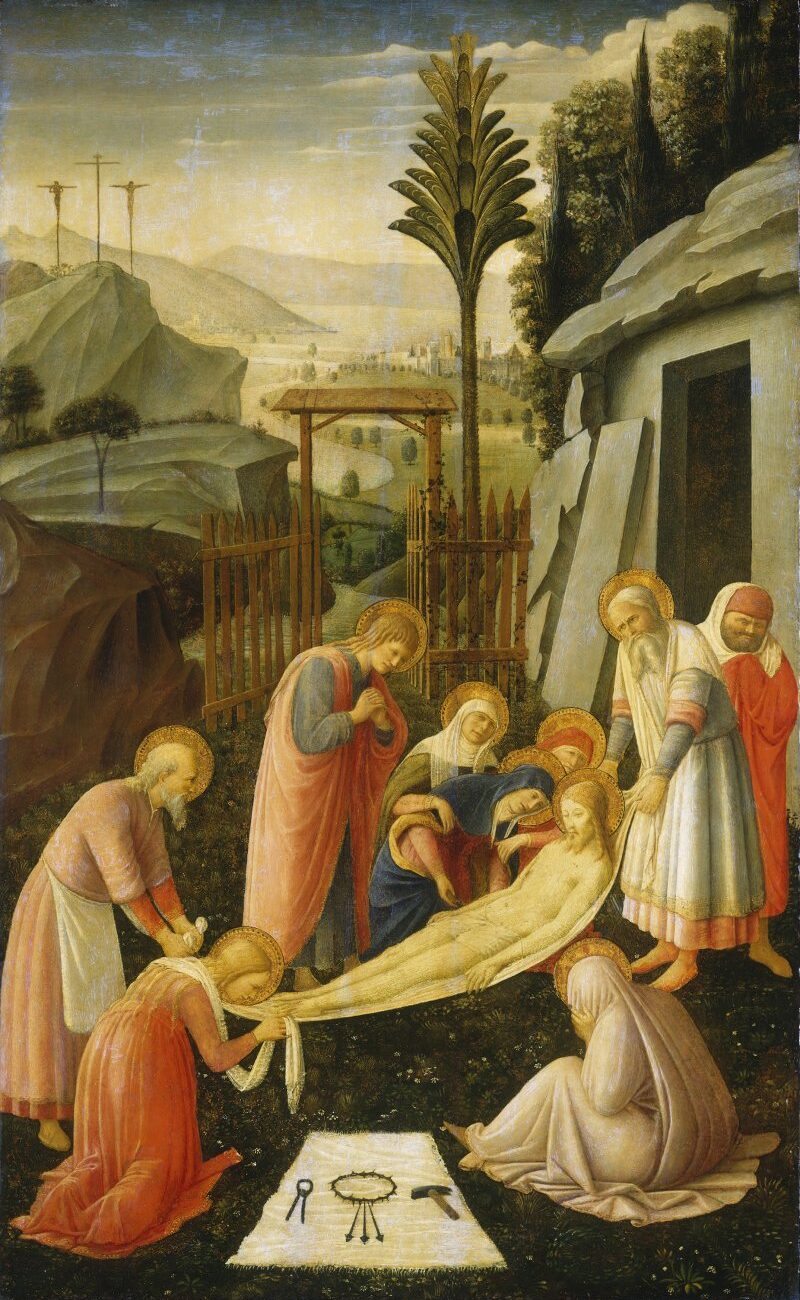By Shemaiah Gonzalez
Catholic News Service
Fra Angelico's "The Entombment of Christ" places us at the tomb as those who loved Christ and were loved by him prepare his body for burial. Christ's pallid body, cradled in burial cloths, is suspended off the ground between two men tenderly carrying his body toward the tomb. Mary, the mother of God, kneels alongside him. Perhaps she whispers into his ear, telling him one last time how much she loves him.
Traditionally in entombment paintings, Mary is surrounded by the wife of Clopas and the mother of James and John, who stood at the foot of the cross with her. Christ called to John from the cross, giving his beloved disciple the care of his own mother. Here John stands devotedly behind her, and they support each other in their grief.

Joseph of Arimathea, who gave his own tomb for Christ to be buried in, leads him into the door. The hammer and pincher he would have used to remove the nails from Christ's hands and feet lay on a piece of cloth in the foreground along with the crown of thorns removed from his head. Mary Magdalene, traditionally portrayed in pink, sits upon the ground. She covers her face with her hands, weeping.
Nicodemus is traditionally found in artwork about the burial of Christ, so we can assume that the man at Christ's feet is him. But who is the woman next to him? She is halo-ed so we can infer she is a saint.
And the last man in the painting, near the opening of the cave, who is he? He does not have a halo, so we know he was not a saint. He appears to be in deep grief, his head turned as he cannot look upon Christ's body.
Dominican Fra Angelico (1387-1455) led a simple and devout life in Florence, Italy. He was humble, a friend to the poor; and when Rome offered him the seat of the archbishop of Florence, he refused the position.
Painting was the way he lived out his vocation. He would never take up his brushes without a prayer and chose only holy subjects. Sixteenth-century art historian, Giorgio Vasari wrote that whenever Fra Angelico painted a crucifixion, tears would stream down his face.
During Fra Angelico's vocation, the art world was amid change; his work reflects this transition from Gothic to Renaissance, as he played with light and shadow to create perspective, a relatively new technique.
His paintings are more narrative in approach than religious paintings that came before him, telling a story of a biblical event and arranging the participants on the canvas in such a way that you are invited into that story. These paintings were known as Sacred Conversations, a genre ushered in by Fra Angelico, Giovanni Bellini and Raphael.
Fra Angelico's work reflects a refined use of color. He chose softer pinks and blues, rather than the bright jeweled tones of the Gothic period. These color choices give each work a sense of peace and serenity about it.
His paintings were acts of worship for Fra Angelico. Through his subtle choices of color and narrative, he invited the viewer into the story.
"The Entombment of Christ" is a quiet painting. The background depicts a picturesque landscape with hills and streams. The city of Jerusalem is shown, as is the hill, Golgotha, where Christ was crucified. One imagines how long it took to move Christ's body from the cross to the tomb. The bodies of the two thieves crucified alongside Christ are still there. Perhaps they had no one to claim them, no one to care for their bodies.
There is a tenderness between each person and the body of Christ. Perhaps they are remembering how loved they felt during those months, years with their Lord and then grief of that love lost. As we look at each of their faces, we wonder which response would be our own.
Gonzalez is a freelance writer. Her website is www.shemaiahgonzalez.com.
